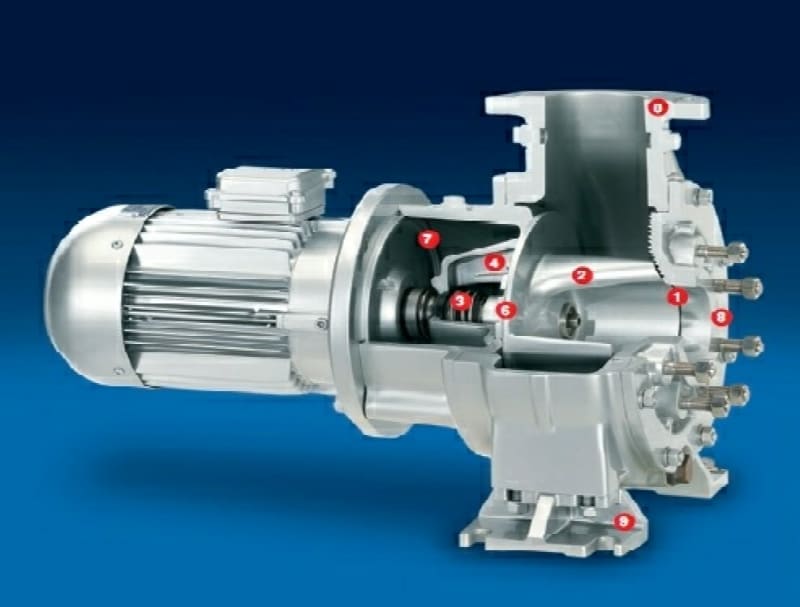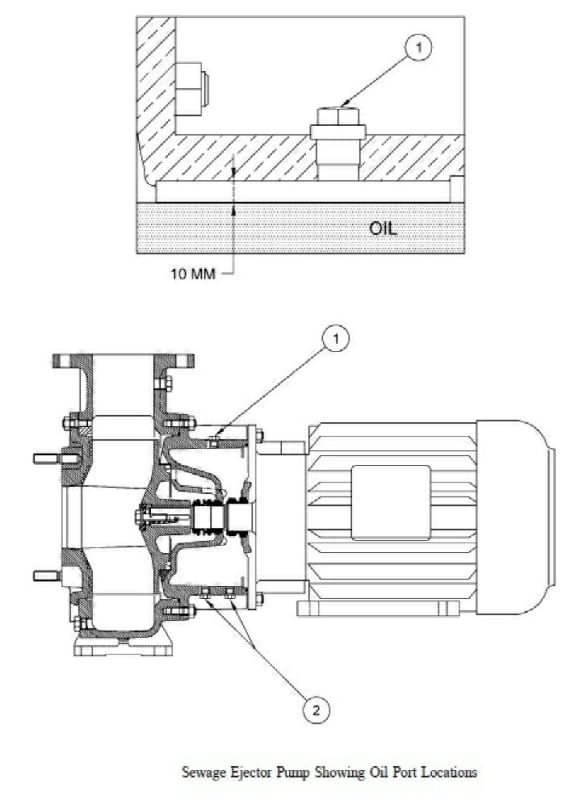We have had a high failure rate of sewage pump seals in a fairly new installation, which then leaks black water into the motor bearing with predictable results. The pump model is UNIVERS-A by Herborner. There are a number of system issues I believe are contributing to the failure rate, but first, I'm trying to fully understand the design principles of this sewage pump. It has an oil-filled intermediate cavity between the process fluid and the motor, with seals at each end sealing the shaft entry points. As I understand it, this oil volume provides a buffer from blackwater leaking directly into the pump environment upon a seal failure. On the process fluid side, the seal is exposed to the blackwater and all debris entrained in it, with no flush fluid provision. This seems like a major seal no-no to me. The oil cavity is filled almost completely full, with a small air space at the top, then plugged. So it is at ambient pressure, except I presume some pressure will develop due to heat-up during operation. There is no means to maintain pressure by oil replenishment. When the primary seal fails, blackwater leaks into the oil volume, and when the oil seal fails, the oil/blackwater leak into the motor bearing. Both seals are failing at a high rate on multiple pumps.
So, is the oil also supposed to be the primary lubricant on the main water seal such that it precludes blackwater from entering the seal? If so, how does this work without a pressurized oil side? There is a flow path of process fluid to the seal from near the impeller edge, so it seems that the higher pressure side of the seal is the blackwater and not the oil.
I'm very familiar with other clean water centrifugal pumps, but this is a strange bird to me. Any information will be greatly appreciated.
So, is the oil also supposed to be the primary lubricant on the main water seal such that it precludes blackwater from entering the seal? If so, how does this work without a pressurized oil side? There is a flow path of process fluid to the seal from near the impeller edge, so it seems that the higher pressure side of the seal is the blackwater and not the oil.
I'm very familiar with other clean water centrifugal pumps, but this is a strange bird to me. Any information will be greatly appreciated.



